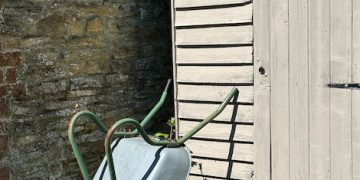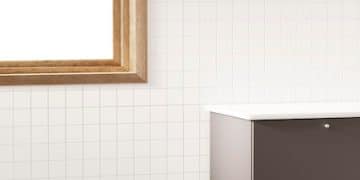DIY Fixes: 7 Simple Hacks for Household Repairs & Saving Money

Anúncios
Discover seven simple yet effective DIY fixes to repair common household items, saving you money and reducing waste by extending the lifespan of your belongings.
Household repairs don’t always require a professional. With a few clever techniques, you can tackle many common issues yourself. This article unveils 7 DIY fixes: Simple Hacks to Repair Household Items and Save Money This Year.
Anúncios
Simple DIY fixes for everyday household items
Many everyday household items break down or require basic repairs over time. Instead of immediately replacing them, consider simple DIY solutions to extend their lifespan and save money. These hacks are easy to implement and require minimal tools.
Repairing Damaged Furniture
Scratches and dents can make furniture look worn, but simple fixes can restore its appearance. Wood fillers and touch-up markers are effective for minor damages.
Anúncios
Clothes Mending Techniques
Torn seams or missing buttons can be easily fixed with basic sewing skills. A needle and thread can be used to mend tears and reattach buttons, extending the life of your wardrobe.
- Use wood filler to patch holes and cracks in wooden furniture.
- Apply touch-up markers to conceal scratches and minor blemishes.
- Iron-on patches are ideal for repairing small tears in upholstered furniture.
- Mix a small amount of paint to match the existing colour and cover up more visible scratches.

Repairing damaged furniture and clothing is not only cost-effective but also environmentally friendly.
Unclogging drains with common household items
Clogged drains are a common nuisance in many households. Instead of using harsh chemical drain cleaners, try using common household items for a more natural and cost-effective solution. These methods are safer and can often clear minor blockages effectively.
Baking Soda and Vinegar Method
A mixture of baking soda and vinegar can create a fizzy reaction that helps to break down clogs. This method is gentle and safe for your pipes.
Using a Plunger Correctly
A plunger can create suction to dislodge debris and clear blockages. Ensure the plunger creates a tight seal around the drain for optimal results.
- Pour 1 cup of baking soda down the drain, followed by 2 cups of vinegar.
- Let the mixture fizz for 30 minutes, then flush with hot water.
- Use a wire coat hanger to break up larger clogs manually.
- Pour boiling water down the drain to dissolve greasy build-up.
Unclogging drains with household items is a simple and environmentally conscious way to maintain your plumbing.
Fixing squeaky doors and windows
Squeaky doors and windows can be irritating, but they are usually easy to fix. Lubrication is often the key to quieting those annoying noises. Common household items can provide the necessary lubrication to ensure smooth operation.
Using Lubricants
Apply lubricants such as WD-40 or petroleum jelly to hinges and tracks to reduce friction. This will help eliminate squeaks and ensure smooth movement.
Tightening Loose Hinges
Loose screws in hinges can cause doors and windows to squeak. Tightening or replacing these screws can often solve the problem.
Fixing squeaky doors and windows is a quick way to improve the comfort of your home.
Repairing minor wall damage
Walls can easily get scuffed, scratched, or even punctured. Simple repairs can restore the appearance of your walls without the need for professional help. Patching minor damage is a straightforward process that can be completed with basic tools and materials.
Patching Small Holes
Use spackle or joint compound to fill small holes left by nails or screws. Sand the area smooth and apply a fresh coat of paint.
Removing Scuff Marks
A simple cleaning solution or a magic eraser can remove scuff marks and stains from walls. Gently scrub the affected area to restore its appearance.

- Apply a small amount of toothpaste to fill very small nail holes.
- Use a damp cloth with mild soap to wipe away minor scuff marks.
- Sand down any rough edges before applying the patching compound.
- Use a primer before painting to ensure even colour coverage.
Repairing minor wall damage can significantly improve the overall look of your home.
Reviving old electronics
Old electronics often suffer from reduced performance or minor malfunctions. Before discarding them, consider simple DIY fixes that can revive their functionality. Cleaning, reseating connections, and replacing batteries are common solutions.
Cleaning and Dust Removal
Dust and debris can accumulate inside electronics, causing overheating and reduced performance. Use compressed air to clean vents and connections.
Battery Replacement
Replacing old batteries can significantly improve the performance of devices like remote controls and clocks. Use the correct type of battery for optimal results.
Reviving old electronics is an excellent way to reduce electronic waste and save money.
Maintaining appliances for longevity
Appliances require regular maintenance to ensure they function efficiently and last longer. Simple tasks like cleaning, descaling, and lubricating can prevent costly repairs and extend the lifespan of your appliances. Routine maintenance is key to keeping your appliances in top condition.
Descaling Kettles and Coffee Makers
Mineral build-up can affect the performance of kettles and coffee makers. Use a descaling solution or vinegar to remove deposits and improve efficiency.
Cleaning Refrigerator Coils
Dirty refrigerator coils can reduce cooling efficiency and increase energy consumption. Vacuum the coils regularly to maintain optimal performance.
- Use a vacuum cleaner with a brush attachment to clean dust from appliance vents.
- Wipe down appliance surfaces with a damp cloth to remove spills and grime.
- Check and replace filters in appliances like air conditioners and vacuum cleaners.
- Inspect appliance cords for damage and replace if necessary.
Maintaining appliances will prolong their lifespan, saving you money and reducing the need for replacements.
Sealing gaps around windows and doors
Gaps around windows and doors can lead to drafts and energy loss. Sealing these gaps can improve energy efficiency and reduce heating and cooling costs. Simple weatherstripping and caulk can create a tight seal and prevent air leaks.
Applying Weatherstripping
Weatherstripping is an easy way to seal gaps around doors and windows. It comes in various forms, including foam, felt, and rubber.
Using Caulk
Caulk can be used to seal smaller gaps and cracks around windows and door frames. Apply caulk evenly and smoothly for a professional finish.
Sealing gaps around windows and doors is a cost-effective way to improve energy efficiency and keep your home comfortable.
| Key Point | Brief Description |
|---|---|
| 🛠️ Furniture Repair | Use wood filler/markers for scratches and dents on furniture. |
| 🚰 Drain Unclogging | Mix baking soda and vinegar to clear clogged drains naturally. |
| 🚪 Door Squeaks | Apply WD-40 to hinges of squeaky doors and windows. |
| 🧱 Wall Damage | Patch small wall holes with spackle, sand, and paint. |
Frequently Asked Questions
▼
A magic eraser or a damp cloth with a mild cleaning solution can often remove scuff marks from walls. Gently scrub the affected area to avoid damaging the paint.
▼
To prevent drains from clogging, avoid pouring grease down the drain and use drain screens to catch hair and debris. Regularly flush drains with hot water.
▼
WD-40, petroleum jelly, or even cooking oil can be used to lubricate squeaky door hinges. Apply a small amount to the hinge and work the door back and forth.
▼
Refrigerator coils should be cleaned at least twice a year to maintain optimal cooling efficiency. Use a vacuum cleaner with a brush attachment to remove dust and debris.
▼
Weatherstripping and caulk are effective ways to seal gaps around windows. Apply weatherstripping to moving parts and caulk to stationary frames for a tight seal.
Conclusion
By embracing these simple DIY fixes, you can extend the lifespan of your household items, save money on repairs and replacements, and reduce waste, contributing to a more sustainable lifestyle.





